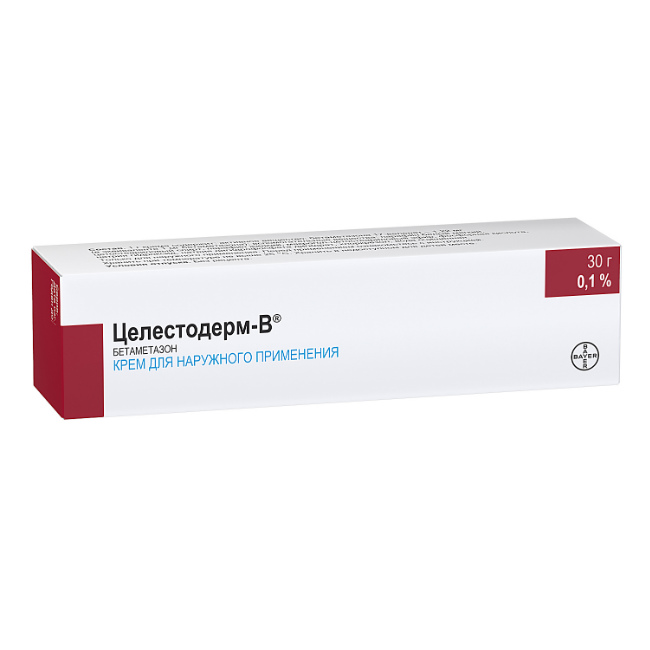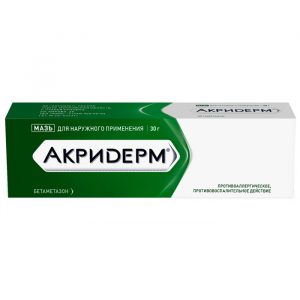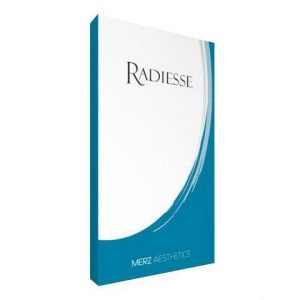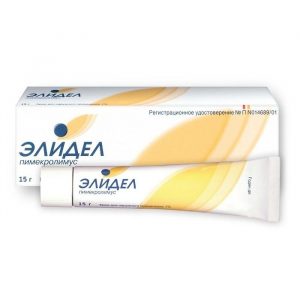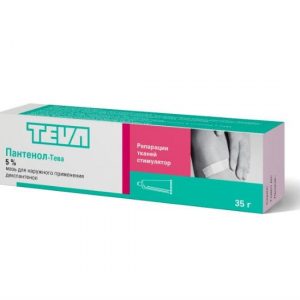Description
Release form
Cream.
packaging 30 g tube
Pharmacological action of
Celestoderm-B contains betamethasone valerate and gentamicin.
Betamethasone valerate – a glucocorticosteroid (GCS), has anti-inflammatory and anti-allergic effects, inhibits the release of cytokines and inflammatory mediators, reduces the metabolism of arachidonic acid, induces the formation of lipocortins with decongestant activity, and reduces vascular permeability.
Gentamicin – a broad-spectrum antibiotic – when applied topically, it is effective against most common pathogens.
Indications
Topical treatment of wet or oily skin diseases amenable to corticosteroids therapy, in the presence of a secondary infection caused by microorganisms susceptible to gentamicin, or if such an infection is suspected:
– Eczema (atopic, pediatric, coin-like).
– Contact dermatitis.
– Seborrheic dermatitis.
– Neurodermatitis.
– Solar dermatitis.
– Exfoliative dermatitis.
– Radiation dermatitis.
– Diaper rash.
– Psoriasis.
– Anogenital itching.
– Senile itching.
Contraindications
– Hypersensitivity to any of the components of the drug.
– Tuberculosis of the skin.
– Cutaneous manifestations of syphilis.
– Chicken pox.
– Cold sores.
– Fungal skin diseases.
– The vaccination period and skin post-vaccination reactions.
– Lactation.
– Pregnancy (long-term treatment of large areas of the skin).
– Children under 6 months of age.
Precautions:
– Pregnancy (in the absence of criteria for contraindication), especially in the 1st trimester.
– Long-term treatment of large areas of the skin, especially in children.
– In the presence of skin cracks or the use of occlusive dressings.
Use during pregnancy and lactation
Due to the fact that the safety of the use of local GCS in pregnant women has not been established, the appointment of drugs of this class during pregnancy is justified only if the benefit to the mother clearly exceeds the possible harm to the fetus.
GCS should not be used during pregnancy for long periods or in large doses.
Since it has not yet been established whether GCS, with topical application and systemic absorption, can pass into breast milk, a decision should be made whether to stop breastfeeding or to discontinue the drug, given how necessary is its use for the mother.
Special instructions
Celestoderm B is not intended for use in ophthalmology.
When using the drug on large surfaces and / or with an occlusive dressing, it is necessary to bear in mind the possibility of a systemic effect of betamethasone, as well as the development of the following side effects: maceration of the skin, attachment of a secondary infection, atrophy of the skin, striae, prickly heat.
If bacterial and fungal microflora resistant to the drug appear, discontinue use of the drug and prescribe appropriate therapy.
Use in pediatrics
For children, the drug is prescribed only according to strict indications and under medical supervision, as possible development of systemic side effects associated with betamethasone: suppression of the function of the hypothalamic-pituitary-adrenal system and the development of symptoms of hypercorticism. In addition, there may be a decrease in the excretion of growth hormones, as well as an increase in intracranial pressure.
Composition
1 g contains:
betamethasone 17 – valerate (equivalent to 1 mg betamethasone),
gentamicin sulfate (equivalent to 1 mg gentamicin base).
Side effects
Local reactions: skin irritation (itching, erythema), burning sensation, dry skin, folliculitis, hypertrichosis, acne eruptions, hypopigmentation, perioral dermatitis, allergic contact dermatitis. When using occlusive dressings: maceration of the skin, secondary infection, atrophy of the skin, striae, prickly heat.
With prolonged treatment or application to a large surface: the development of systemic side effects characteristic of corticosteroids is possible: weight gain, osteoporosis, increased blood pressure, edema, ulceration of the gastrointestinal mucosa, exacerbation of hidden foci of infection, hyperglycemia, agitation, insomnia, menstrual irregularities.
In children receiving local corticosteroids, the following side effects may occur: suppression of the function of the hypothalamic-pituitary-adrenal system, Cushing’s syndrome, growth retardation, lag in weight gain, increased intracranial pressure. Symptoms of inhibition of adrenal cortex function in children include a decrease in plasma cortisol and a lack of response to ACTH stimulation. An increase in intracranial pressure is manifested by bulging fontanel, headache, bilateral edema of the optic disc.
Overdose
Symptoms: excessive or prolonged use of local corticosteroids can inhibit the function of the pituitary-adrenal system, which can lead to the development of secondary adrenal cortical insufficiency and the appearance of symptoms of hypercorticism, including Cushing’s syndrome.
A single overdose of gentamicin is not accompanied by the appearance of any symptoms. Long-term use in doses exceeding the recommended ones can lead to a significant increase in insensitive flora, including fungal, in the lesion focus.
Treatment: appropriate symptomatic treatment is indicated. The acute symptoms of hypercorticism are usually reversible.
If necessary, electrolyte imbalance correction is indicated. In case of chronic toxic effects, gradual withdrawal of corticosteroids is recommended. With uncontrolled growth of microorganisms, appropriate antibacterial or antifungal treatment should be selected.
Storage conditions
Do not store above 25 ° C.
pharmacy terms and conditions without a prescription
Form of Treatment
cream
Prescribing
Pregnant prescribing , Adults, Children older than 6 months
Possible product names
Celestoderm C cream 0.1%, 30 g
CELESTODERM B with haramycin 30.0 CREAM
Celestoderm B with garamycin cream 0.1%, 30 g
CELERODERMERCODER CELERODERM CERESTRERMERODERM B + haramycin cream 0.1% tube 30g Belgium
